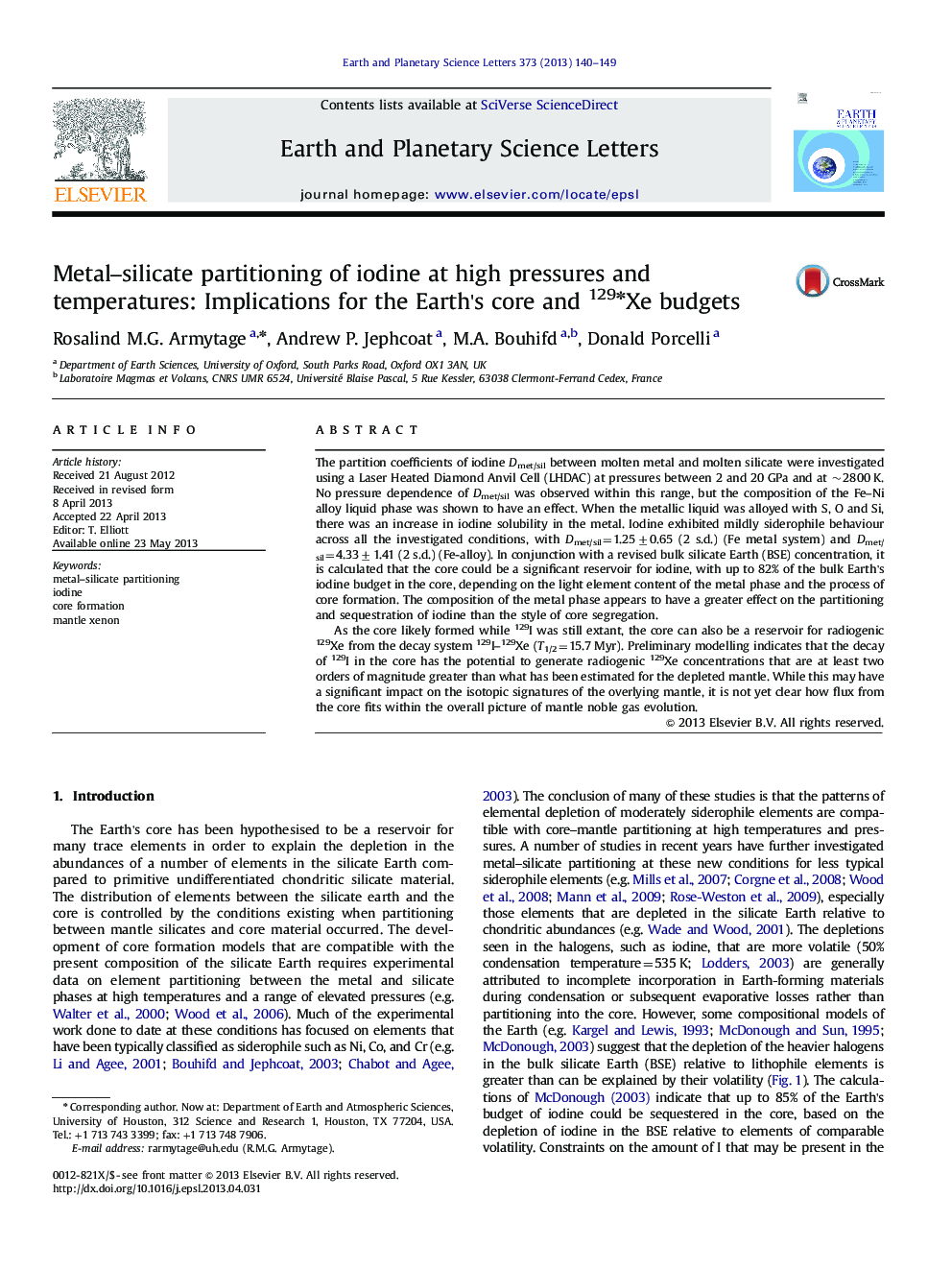| کد مقاله | کد نشریه | سال انتشار | مقاله انگلیسی | نسخه تمام متن |
|---|---|---|---|---|
| 4677073 | 1634782 | 2013 | 10 صفحه PDF | دانلود رایگان |

• Experimental partitioning of iodine between liquid metal and liquid silicate.
• Iodine shows slight siderophile behaviour at 2–20 GPa and ~2800 K with 1.25>DI<4.33.
• The composition of the metal has a dominant effect on the partitioning of I.
• The core could contain up to 80% of the Earth's iodine budget.
• Decay of 129I could lead to high (×100 mantle) concentrations of 129⁎Xe in the core.
The partition coefficients of iodine Dmet/sil between molten metal and molten silicate were investigated using a Laser Heated Diamond Anvil Cell (LHDAC) at pressures between 2 and 20 GPa and at ~2800 K. No pressure dependence of Dmet/sil was observed within this range, but the composition of the Fe–Ni alloy liquid phase was shown to have an effect. When the metallic liquid was alloyed with S, O and Si, there was an increase in iodine solubility in the metal. Iodine exhibited mildly siderophile behaviour across all the investigated conditions, with Dmet/sil=1.25±0.65 (2 s.d.) (Fe metal system) and Dmet/sil=4.33±1.41 (2 s.d.) (Fe-alloy). In conjunction with a revised bulk silicate Earth (BSE) concentration, it is calculated that the core could be a significant reservoir for iodine, with up to 82% of the bulk Earth's iodine budget in the core, depending on the light element content of the metal phase and the process of core formation. The composition of the metal phase appears to have a greater effect on the partitioning and sequestration of iodine than the style of core segregation.As the core likely formed while 129I was still extant, the core can also be a reservoir for radiogenic 129Xe from the decay system 129I–129Xe (T1/2=15.7 Myr). Preliminary modelling indicates that the decay of 129I in the core has the potential to generate radiogenic 129Xe concentrations that are at least two orders of magnitude greater than what has been estimated for the depleted mantle. While this may have a significant impact on the isotopic signatures of the overlying mantle, it is not yet clear how flux from the core fits within the overall picture of mantle noble gas evolution.
Journal: Earth and Planetary Science Letters - Volume 373, 1 July 2013, Pages 140–149